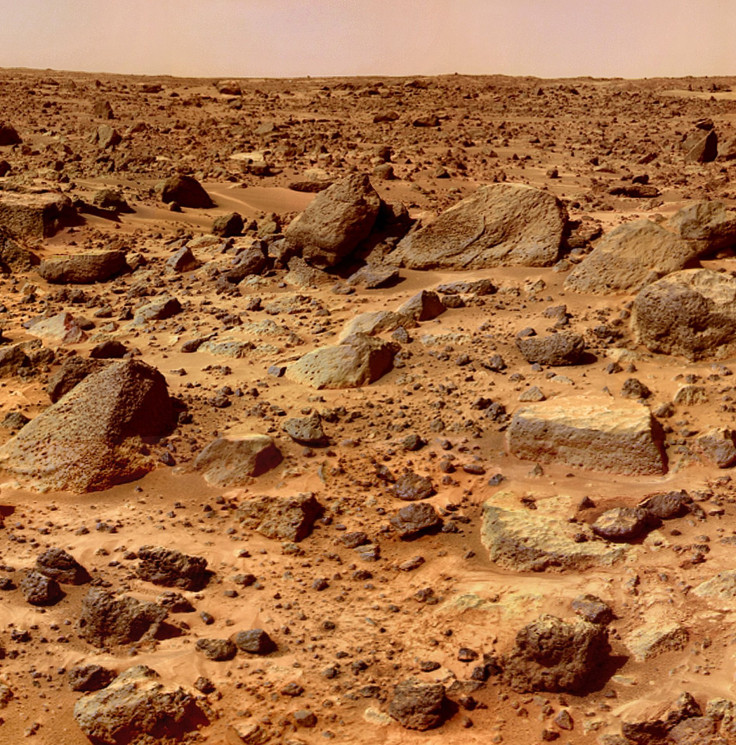Man Claims Mysterious Photo Of Rocks Shows 'Alien Figure' On Mars
A photograph captured by NASA's Mars Rover, Perseverance, left many internet users wondering if they were looking at definitive proof of life on the neighboring planet.
The image from April 2021 became the subject of discussion after Scott C Waring, who runs the blog UFO Sightings Daily, said the photograph was more than just a collection of rocks, according to CNET. Waring zoomed in on the image so much that the pixelated and fuzzy portion of it seemed to show someone basking in the great outdoors of the red planet.
Waring claimed this was “100% proof of intelligent life” on Mars.
“Everyone here knows I love to comb through NASA photos. Well, I came across something unique...something that is 100% proof of intelligent life,” Waring wrote in his blog post. “There is a person laying down watching the NASA Mars rover from a safe distance away.”
“The person is about 1 foot tall, .3 meters and is laying down, pinkish upper chest, neck and face, radish hair, wearing a dark suit, but has a grey object over one shoulder...looks like a backpack of some sort,” Waring continued. “There are even footprints behind the person leading up to the location they chose to lay down at.”
Although Waring made several people on the internet excited, the image is far from proof of aliens on Mars, as per Lake County News. It is likely to be a trick of the eye, owing to a phenomenon known as “pareidolia.” It is this phenomenon that makes us see shapes of animals in the clouds, find interesting shapes in a slice of burnt toast and even see faces in the Moon.
Those who expect to see a certain something or are actively looking to find something peculiar around them are more likely to experience pareidolia.
“Being able to see Jesus's face in toast is telling you more about what's happening with your expectations, and how you're interpreting the world based on your expectations, rather than anything that's necessarily in the toast,” Neuroscientist Sophie Scott previously told BBC.
Therefore, people who endlessly sieve through pictures with the sole intention of finding evidence of life on Mars are likely to spot figures that seem like aliens to them. And, once they see it, it’s hard to unsee it. “That's one of the things about illusions, they have this remarkable tendency to formulate in your mind, and it's very difficult to unthink them,” Bruce Hood, author of “The Self Illusion: How the Social Brain Creates Identity,” told the publication.























